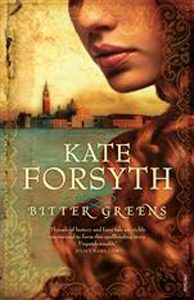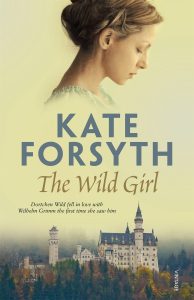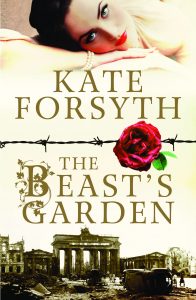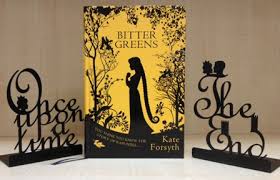
THE STORY DOCTOR
So many people email me asking me for writing advice I have decided to begin a new section on my blog where I share my answers to these questions.
Over time, I hope to build a wonderful resource for aspiring writers to help them diagnose what may be ailing their story ...
Dear Kate
I heard you speak one time about the importance of controlling narrative distance in your writing, and what a useful tool it can be in writing from a 3rd person perspective. Can you please explain a little further?
I can!
Deciding what Point-of-View (POV) to use when writing a novel is one of the earliest decisions an author makes. As you would know from grammar lessons at school, there are three types of POV:
1st person – I
2nd person – you
3rd person – he/she
Sometimes it’s an easy choice. The voice of Charlotte-Rose de la Force, the protagonist of my novel Bitter Greens, came to me very clearly in 1st person: I was always a great talker and teller of tales …’
There are actually three narrative strands in Bitter Greens, two of them told in 1st person and one in 3rd person, which is an unusual authorial choice. I had a good reason for that choice (though to explain why would be a spoiler!)

I knew from an early stage of the novel that The Wild Girl would be told in close 3rd person: ‘Wild by name and wild by nature,’ Dortchen’s father used to say of her. He did not mean it as a compliment. He thought her headstrong and so he set himself to tame her.
(Close 3rd person simply means that there is only one point-of-view all the way through the novel).

I initially wrote The Beast’s Garden in close 1st person, but then – after a great deal of agonised heart-searching – decided the book was not working as well as I wanted, and so I rewrote the entire book in multiple 3rd person (which means more than one POV). \
I fell in love the night the Nazis first showed their true faces to the world
was changed to:
Ava fell in love the night the Nazis first showed their true faces to the world.

It was a slow, difficult, back-breaking process. I could not blithely use the global change facility in my word processor – I had to go through every page line-by-line, checking it again and again, rewriting every sentences, every scene.
So why did I choose to go through the agony of changing POV?
There were several key reasons, but most important to me was that multiple POV allowed me to tell my story from many different angles, across times and geographies; and because 3rd person POV has one huge advantage over 1st person.
The use of the objective narrator.
When writing in 1st person, the author must always stay deep within that character’s consciousness, privy only to their thoughts and feelings and only ever speaking in their voice. Their POV is therefore necessarily limited.
However, when writing in 3rd person, the writer can move fluidly between the voice of the objective narrator and the deep, close point-of-view of the character.
Not sure what I’m talking about?
Now might be a good time to talk about narrative distance.
Narrative distance is the feeling of closeness between the reader and the point-of-view of the characters. It is, of course, controlled by the author and is part of what creates a distinctive “voice.”
John Gardner explores the idea in his book The Art of Fiction – though he calls it ‘psychic distance’. He defines it as ‘the distance the reader feels between themselves and the events in the story.’
Basically, it's how deep the reader is taken inside the character's head. Gardner has defined five different levels of engagement:
1 It was winter of the year 1853. A large man stepped out of a doorway.
2 Henry J. Warburton had never much cared for snowstorms.
3 Henry hated snowstorms.
4 God, how he hated these damn snowstorms.
5 Snow. Under your collar, down inside your shoes, freezing your miserable soul.
The first example creates the greatest distance between reader & character, but is the most effective for delivering information. Each new example takes us deeper into the character’s individual point of view, and – in the final two examples – into the character’s own voice. The deeper the author goes, the more is revealed about character and the less about anything else.
The deeper you go, the more important is the character’s individual “voice”.
When writing in 3rd person POV, the writer draws upon all five states of narrative distance, for different purposes and for different reasons. The first example is often called ‘the objective narrator’. It’s a really useful method for quickly giving the reader necessary information. Most writers will use it to give a wide-screen shot of the scene, before zooming in to the character’s thoughts and feelings, and then zooming out again.
Others will write the entire story in ‘deep point-of-view’, only ever revealing the character’s thoughts, feelings and impressions in a ‘stream-of-consciousness’ manner.
Of course, this method means a lot more investment from the reader – they need to figure out what’s going on with little help from the narrator.
The objective narrator is such a great tool for writers, but beware of over-using the device as it can create a coldness or a distance between reader and character. Slip into the deeper POV as often as you can without confusing the reader. One way to do this is to signal the change from the objective narrator to the deep point-of-view by moving from indirect discourse to free indirect discourse i.e. I wonder when she’ll be here, he thought. Damn, but I’ve missed that girl.
What is crucial, however, is that narrative distance must always be controlled. The author must choose how deep to go.
I hope this helps you!
all my best
Kate
Kate Forsyth has been writing stories since she could first hold a pen, and has since sold more than a million copies worldwide. She has a Bachelor of Arts in Literature, a Master of Arts in Writing, and a Doctorate of Creative Arts in Fairy Tale Studies, and is an accredited master storyteller. She teaches creative writing at all levels at many different venues. Check out her Appearances Page to find out where she is next speaking.
If you found this post of interest you may enjoy
THE STORY DOCTOR: How do you know when your manuscript is finally finished?
THE STORY DOCTOR: How important is research in the writing process?
SPOTLIGHT: My notebook for THE WILD GIRL
Ask THE STORY DOCTOR to help you diagnose what's wrong with your story ...


